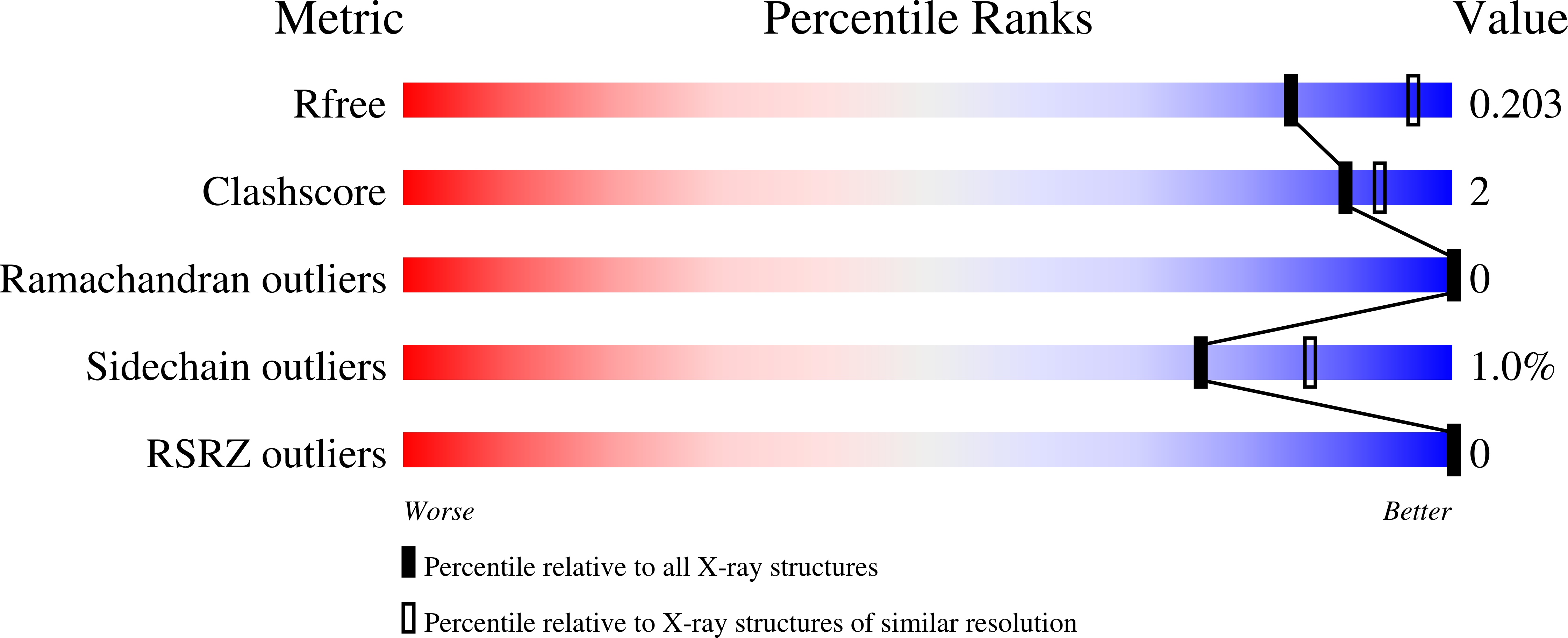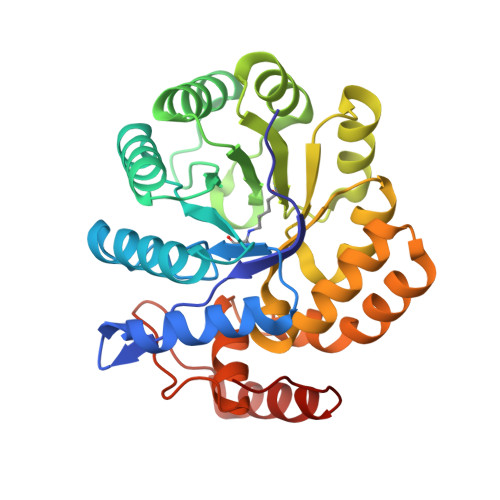Biomimetic Design Results in a Potent Allosteric Inhibitor of Dihydrodipicolinate Synthase from Campylobacter jejuni.
Skovpen, Y.V., Conly, C.J., Sanders, D.A., Palmer, D.R.(2016) J Am Chem Soc 138: 2014-2020
- PubMed: 26836694
- DOI: https://doi.org/10.1021/jacs.5b12695
- Primary Citation of Related Structures:
5F1U, 5F1V - PubMed Abstract:
Dihydrodipicolinate synthase (DHDPS), an enzyme required for bacterial peptidoglycan biosynthesis, catalyzes the condensation of pyruvate and ¦Â-aspartate semialdehyde (ASA) to form a cyclic product which dehydrates to form dihydrodipicolinate. DHDPS has, for several years, been considered a putative target for novel antibiotics. We have designed the first potent inhibitor of this enzyme by mimicking its natural allosteric regulation by lysine, and obtained a crystal structure of the protein-inhibitor complex at 2.2 ? resolution. This novel inhibitor, which we named "bislysine", resembles two lysine molecules linked by an ethylene bridge between the ¦Á-carbon atoms. Bislysine is a mixed partial inhibitor with respect to the first substrate, pyruvate, and a noncompetitive partial inhibitor with respect to ASA, and binds to all forms of the enzyme with a Ki near 200 nM, more than 300 times more tightly than lysine. Hill plots show that the inhibition is cooperative, indicating that the allosteric sites are not independent despite being located on opposite sides of the protein tetramer, separated by approximately 50 ?. A mutant enzyme resistant to lysine inhibition, Y110F, is strongly inhibited by this novel inhibitor, suggesting this may be a promising strategy for antibiotic development.
Organizational Affiliation:
Department of Chemistry, University of Saskatchewan , 110 Science Place, Saskatoon, Saskatchewan, Canada S7N 5C9.





















